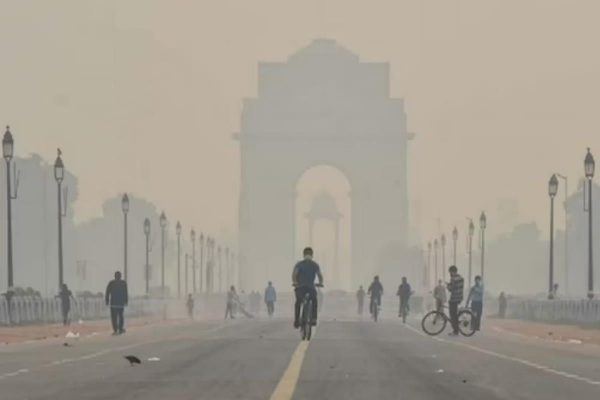

Delhi continued to grapple with “very poor” air quality, remaining on the verge of a public health emergency, with an air quality index (AQI) of 364 recorded on Wednesday, marking the season’s worst levels. On Thursday, at 8:00 am, an overall AQI of 351 (categorized as “very poor”) was reported. However, certain areas such as Anand Vihar (413), Bawana (401), Mundka (420), and Punjabi Bagh (416) experienced “severe” air quality at 8:05 am. Similar AQI levels were observed in parts of the city on Wednesday, including Mundka (417), Anand Vihar (416), Wazirpur (409), and Punjabi Bagh (408). Brief spells of “severe” air quality were reported in Bawana and Rohini on Wednesday afternoon.
Despite various mitigation efforts, pollution levels are expected to deteriorate over the next few weeks. The haze shrouding Delhi is primarily due to local pollutants accumulating in the air due to stagnant winds and decreasing temperatures. The contribution of crop burning in neighboring states remains low due to favorable wind patterns.
According to estimates from the Union Earth Sciences Ministry’s Decision Support System (DSS), farm fires accounted for around 13% of Delhi’s PM2.5 (ultra-fine particulate pollutants) levels on Wednesday. The city’s transport sector contributed 11.4%, and neighboring Gautam Budh Nagar contributed 10.4%. It’s important to note that DSS does not provide real-time pollutant measurements.
Although farm fires in Punjab and Haryana have increased in the past week, they have not yet reached the levels typically seen at this time of year. On Tuesday, Punjab and Haryana reported 1,556 farm fires, nearly three times the number recorded a week earlier (442). However, these figures were lower than the 1,769 farm fires reported on October 31 the previous year and the 3,137 recorded in 2021. Year-on-year data on stubble fires can vary due to differences in cropping and harvesting patterns.
The direction of the wind plays a significant role in the dispersion of farm smoke. A southeasterly wind, such as the one affecting Delhi currently, carries most of the farm smoke toward Rajasthan and across the border, minimizing its impact on Delhi. In contrast, a northwesterly wind direction brings the smoke toward the city.
Severely polluted air affects not only the elderly, children, and individuals with pre-existing conditions or compromised immune systems but also healthy adults. It can lead to bronchitis, asthma, anemia, acute respiratory infections, and nausea.
A 2018 World Health Organization (WHO) study revealed that pregnant women exposed to polluted air are more likely to deliver prematurely and have underweight children. Air pollution can also impact neurodevelopment, cognitive abilities, and increase the risk of childhood cancer. Children exposed to high levels of air pollution are at greater risk of developing chronic diseases like cardiovascular disease in adulthood.
The surge in patients with severe coughs, allergies, and respiratory illnesses has been reported alongside the spike in pollution levels. Delhi’s skies were expected to be clear with some fog on Thursday and Friday, with calm morning surface winds from the east and northwest